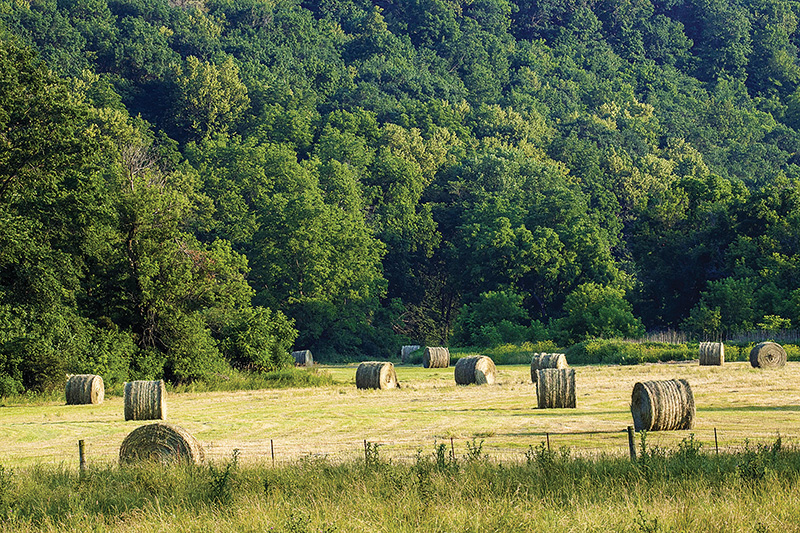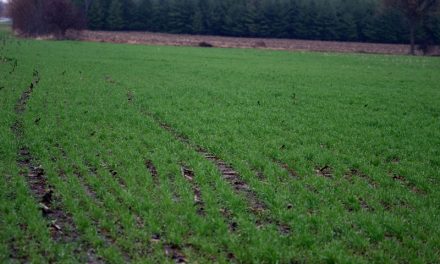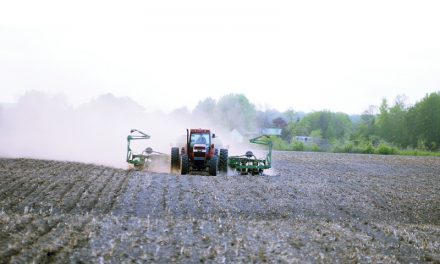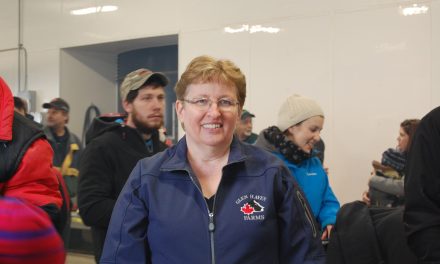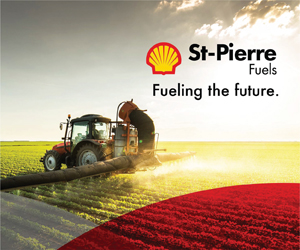By Ashley Knapton
AgriNews Contributor
There are two key functions that we are doing in the spring when it comes to the world of alfalfa – scouting our established fields and seeding our new fields. These fields are going to be important sources of feed for the next 3+ years, so we want to do everything we can to set them, and ourselves, up for success.
The first step to ensure we have secured seed and secured enough of it. Our seeding rate should be based on the amount of pure live seed (PLS) being planted. The PLS number takes into consideration the germination, the % of hard seed, as well as the seed treatment. There can be large differences in the amount of seed treatment on the seed – ranging from nine per cent to 34 per cent, so it is particularly crucial to verify before you set your seeding rate. Often the tag will indicate what the amount of PLS in the bag is. With that in mind, for pure alfalfa stands, the seeding rate can range from 18-20 lbs/ac. For mixed stands, the amount of alfalfa should be reduced slightly to allow for the establishment of the grasses. This seeding rate can be 15-18 lbs/ac, depending on the number of grasses being added. We hope to see 20 plants germinate and establish per ft2 to provide a thick stand with high yield potential down the road.
Now that the seeding rate is established, the next step will to be properly prepare our seedbed. Seed to soil contact is paramount in alfalfa since alfalfa requires high amounts of moisture to germinate. That said, it is important to not plant the seed too deep as to impede the emergence of the seedlings. Ideally, place the seed ¼” to ½” into the ground, slightly deeper in sandy soils. When aiming to determine the fitness of a worked field, observe how deep your boot sinks into the soil when walking. If you can see your boot print, about ½” worth, then the ground is ideal. Any firmer, and there is a risk of the seed not being planted deep enough. Any finer, and the seed can easily be placed too deep. When working the soil, eliminating clods should be a top priority. These clods can impede both the planting and emergence of the alfalfa, as well as altering the drying rate of the soil.
Another option for planting that can be explored is no-till alfalfa. By not tilling the soil, we can preserve the moisture that is already there. Some key considerations to think about before jumping into no-till are the things that would be lost out on – an opportunity to incorporate fertility, the chance to level the seedbed as well as some weed control. It is also important to ensure that your equipment can place the seed correctly in a no-till situation.
Ensuring the successful germination of alfalfa will also require looking at what happened in the field the year before. If the field contained alfalfa, it might be worth reconsidering the plan to plant alfalfa back in the same field. Alfalfa plants are known for their autotoxicity – that is, they produce a chemical that will inhibit the ability of the alfalfa to germinate, establish and persist. The chemical will reside in an 8” radius around the established alfalfa plants and will negatively affect the roots on the new seedlings. This also means that thickening established alfalfa stands is also not an option.
The other residual factor to consider is the herbicides used in the field the year previous. Some situations of thin or poor growing alfalfa fields have been traced back to residual herbicides. Take the time to double check now, rather than realizing the issue after the field has been established.
Alfalfa is a high quality, high quantity crop when truly given a chance to succeed. The first step to profitable fields is giving them the best start possible. No different than corn or beans, taking the time to set up our planter, confirm our seeding rate and verify the ideal field selection will help to ensure strong alfalfa fields for the next three years.

